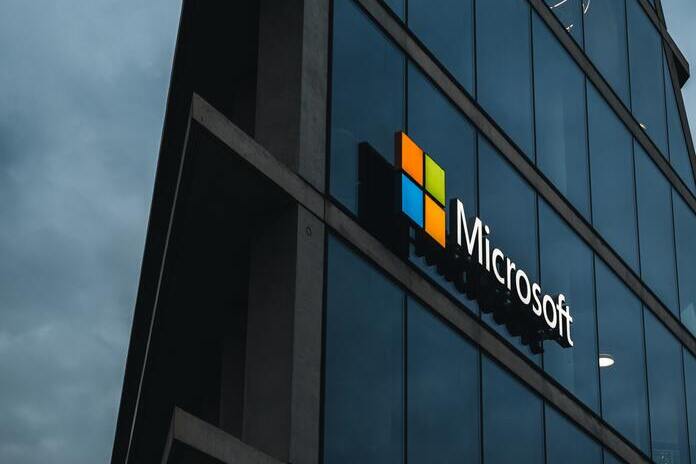Microsoft Stock (NASDAQ:MSFT)
Microsoft Corporation (NASDAQ:MSFT) recorded outstanding results that above analyst forecasts in its most recent earnings release. Furthermore, it delivered a solid Q4 forecast that exceeded expectations. Its cloud business is also growing steadily, despite a modest decline from the prior quarter. However, the focus today is on Microsoft’s AI efforts, and the company is doubling down on its AI objectives by rapidly adding AI tools to its product offerings. Despite its high profitability and significant growth potential from AI, its valuation remains relatively attractive in my opinion, and I give Microsoft stock a BUY rating. The primary danger that Microsoft confronts today is the failure of the Activision Blizzard transaction, which is being threatened by the FTC and the UK’s CMA.
Earnings Overview
CNBC reported on April 25th that Microsoft delivered earnings that exceeded expectations on both the top and bottom lines. Microsoft reported earnings per share of $2.45, compared to a Refinitiv forecast of $2.23, and revenue of $52.86 billion, compared to a Refinitiv estimate of $51.02 billion. They also exceeded expectations with their quarterly outlook. Furthermore, despite a decline from 31% to 27% in the prior quarter, Azure and other cloud services’ growth outpaced expectations. The following day, Microsoft shares rose 7% at the outset as a result of earnings, and even news that the British regulator had blocked the Activision Blizzard purchase did not derail the advance. I feel the market reaction to earnings was well-deserved, considering that Microsoft’s earnings exceeded expectations in key areas while also delivering solid guidance.
Microsoft reported $52.9 billion in revenue for the third quarter, indicating a 7% increase. Its Productivity and Business Processes division reported $17.5 billion in revenue, indicating 11% growth, while its Intelligent Cloud segment recorded $22.1 billion in revenue, representing 16% growth. The sole revenue decrease was in the More Personal Computing division, where revenues fell 9% to $13.3 billion. Net income was reported to be $18.3 billion, representing a 9% increase. Earnings were clearly strong and resilient, even though the More Personal Computing category continues to be impacted by consumer demand slowdowns, in my opinion.
Total sales in the Productivity and Business Processes category increased by 15% in constant currency terms, with growth mostly driven by Office 365. Its gross margin dollars climbed by 14%, and its gross margin percentage also improved. Operating expenses rose by 4%, owing primarily to investments in LinkedIn. Operating income increased by 20% or 27% in constant currency. Within this sector, sales increase for their Office Commercial business was 13% for Office Commercial Products and cloud services, 14% for Office 365 Commercial, and 1% for Office Commercial Product revenues. The LinkedIn unit’s income increased by 8%, owing to Talent Solutions. Furthermore, LinkedIn sessions increased by 15% and had record engagement. Revenue from Office Consumer products and cloud services increased by 1%, while Office 365 consumer users increased by 12% to 65.4 million. Finally, their Dynamics unit reported a 17% rise in Dynamics products and cloud sales, as well as a 25% growth in Dynamics 365 revenue. As growth was seen throughout the units, I believe these results reflect the segment’s strength and resilience. The results were impressive in my opinion, as operational income increased significantly.
Total revenues for the Intelligent Cloud sector increased by 19% in constant currency terms. Gross margin dollars increased by 15%, but the gross margin percentage decreased somewhat. Operating expenses increased, however, this was primarily due to Azure investments. Operating income was stated to be up 13%. The growth in Azure and other cloud services was attributed to strong consumption-based services demand within this segment, their Server Products, and Cloud services unit. Furthermore, revenue from server products fell by 2%. Finally, revenue in the Enterprise Services sector increased by 6%. According to my findings, the mixed results from this area were less stunning than those from the Productivity and Business Processes segments. Although Azure exceeded expectations, as detailed above, I feel the continued deceleration of growth, as indicated above, is potentially troubling, given that Azure has fueled Microsoft’s growth for many years. Although current growth is nevertheless solid, it is significantly lower than the growth experienced in previous years. For example, quarterly growth in 2017 was at least 90%, and quarterly growth in 2018 ranged from the mid-70s to the low-90s. Even in 2019, quarterly growth rates remained in the mid-60s and low 70s. Today’s growth rate of less than 30% is a substantial slowdown and, in my opinion, cause for alarm. Nonetheless, overall results in this area were resilient.
Finally, revenue in their More Personal Computing division fell 7% in constant currency due to its Windows and Devices units. Although gross margin dollars decreased by 9%, gross margin percentage climbed modestly. Operating income was reported to have decreased by 12%. Within this area, their Windows unit had mixed results, with Windows OEM revenues dropping by 28% due to increased channel inventories. Revenue from Windows Commercial Products and cloud services increased by 14%. Revenues in their Gaming segment were down only 4%, as a 30% decline in Xbox hardware revenue was more than offset by a 3% increase in Xbox content and services revenue. The Device unit had significant reductions, with sales falling by 30% as a result of increased channel inventories. Finally, income in Search and News Advertising increased by 10% due to increased search volume and the Xandr purchase. According to my analysis, this area had the lowest outcomes of the three, but this was to be expected due to customer demand difficulties. Despite the fact that their Windows OEM and Devices revenue was devastated, I believe Gaming displayed resiliency, as an increase in Xbox Game Pass compensated for weak hardware sales. In the current difficult consumer market, a 12% drop in operational income is fair in my opinion.
Guidance for Q4
As previously stated, Microsoft gave guidance that exceeded expectations. The sales range for Productivity and Business Processes was $17.9-18.2 billion. The range for Intelligent Cloud was $23.6-23.9 billion, with Azure growth remaining steady from Q3. Finally, the range for More Personal Computing is $13.35-13.75 billion. Windows OEM and device revenue decreases are forecast to be moderate, falling in the low to mid-20s range, which is better than in Q3. These are robust estimates, in my opinion, because Azure’s growth is not expected to slow further and Windows OEM is beginning to show indications of a rebound as decreases reduce. According to my estimate, even if a potential recession looms, the worst is already behind Microsoft.
There is little doubt that OpenAI’s ChatGPT is a market leader. Its introduction last fall captivated the world, and corporations are scrambling to incorporate its innovations into their goods. Microsoft is the closest corporation to OpenAI. Microsoft, as both an investor and a partner, stands to benefit greatly from OpenAI’s LLMs and Generative AI models. Microsoft has previously shown a slew of planned AI partnerships. According to Reuters, Microsoft has begun to offer OpenAI’s GPT models to government cloud clients. According to reports, Microsoft is delivering language-creation models to Azure for US Federal Agencies. Azure Government will now provide LLMs support, which underpins GPT-4. According to Reuters, Microsoft will be the first large corporation to sell chatbot technologies to governments. According to Microsoft, these technologies will assist government agencies in boosting efficiency, and productivity, and gaining fresh insights. They have also developed a new architecture to ensure that access to LLMs is secure and meets security standards. REST APIs, Python SDK, and Azure AI Studio can all be used to access these technologies. These technologies will primarily be used to accelerate content generation, streamline content summarizing, optimize semantic searching, and simplify code generation. Furthermore, it connects to the commercial Microsoft Azure network, therefore extra security was added to limit the exposed surface. Finally, all Azure traffic will be MACsec secured.
Furthermore, Engadget says that Microsoft is integrating voice chat into desktop Bing. According to reports, voice input is now available on a desktop in addition to the mobile version. The new functionality will also allow the chat to read comments aloud to users. It currently supports English, Japanese, French, German, and Mandarin, with support for many more languages on the way.
Microsoft’s AI leadership is demonstrated by its use of technology in a variety of vital sectors. For example, Marktechpost announced on June 11th that Microsoft had just unveiled LLaVA-Med, a huge language and vision model for the biomedical area. It is reported that data curation pipelines are built using self-instruct techniques, GPT-4, and external information. Following that, training is carried out using a high-quality biomedical language-image instruction-following dataset. According to Marktechpost, it demonstrates great conversation abilities as well as domain understanding. This technology has the potential to transform biomedical research and showcases Microsoft’s expertise in AI. I feel that the application of AI in other sectors, such as biology, and Microsoft’s ability to develop in these areas demonstrate that Microsoft has a competitive advantage in AI.
The recent release of Orca is another evidence of Microsoft’s AI superiority. According to Marktechpost, Microsoft AI unveiled Orca on June 13th, which is a 13 billion parameter model that learns explanation traces from GPT-4. It is said to be a milestone in the advancement of instruction-tune models. Orca performs explanation tweaking, task and instruction scaling, and rigorous evaluation, which is a significant step forward for AI system capabilities. According to Marktechpost, using step-by-step explanations can unlock the potential of Large Foundation Models and accelerate development in natural language processing. This once again highlights Microsoft’s leadership in AI technology.
I believe Microsoft’s ongoing collaboration with generative AI industry leader OpenAI will continue to benefit the company. No firm, in my opinion, is closer to OpenAI than Microsoft, and this will strengthen Microsoft’s competitive edge in several industries such as Search and Cloud Services. Furthermore, I believe Microsoft’s AI Leadership can extend outside traditional fields into industries such as biology. In my opinion, Microsoft’s innovation in these new domains illustrates its AI advantage over competitors. According to my analysis, AI will be Microsoft’s growth driver in the coming years.
Microsoft now has a P/E ratio of 36.22. Although it has recovered dramatically from its near-term low in the low 20s, the P/E ratio is still nowhere near the high levels witnessed in 2018. Despite the fact that Azure’s growth has been slower than in previous years, the promise of AI’s growth potential more than compensates for this. I believe Microsoft’s AI leadership merits a higher P/E valuation than it now has since AI adoption might reaccelerate development in several of its many areas. For example, the new Azure Government AI adoption might re-accelerate Azure’s growth, while the new Bing AI Search could gain market share. Although Microsoft’s P/E ratio is not exceptionally low at the moment, I feel that effective AI adoption could result in significant multiple expansions. With so many AI tailwinds, Microsoft, in my opinion, should be priced at around 45 times earnings. As a result, I initiate Microsoft with a BUY rating and a $385 price target.
Risks
The collapse of the Activision Blizzard merger is currently Microsoft’s greatest risk. Yahoo Finance reported on June 12th that Xbox and Activision Blizzard were critical to Microsoft. Despite the legal difficulties, Microsoft Gaming CEO Phil Spencer is said to be “very committed” to getting the Activision Blizzard purchase authorized. It is also evident that Microsoft perceives this acquisition as having great strategic worth. According to Spencer, “We think there’s a real capability that Activision-Blizzard-King has, specifically in mobile and PC, just growing our portfolio that will help us find more players, reach more players.” On June 12th, Bloomberg reported that the Federal Trade Commission had filed a complaint to prevent Microsoft from concluding the deal. The FTC filed a federal court lawsuit against Microsoft in order to prevent the purchase from closing before the July 18th deadline. Microsoft is also challenging the UK Competition and Markets Authority’s decision to prohibit the acquisition. With Microsoft seeing such high strategic value in acquiring Activision Blizzard and the growing substantial legal challenges to the agreement, I believe it would be detrimental to Microsoft’s interests if the deal failed. I believe the deal would have improved Microsoft’s gaming division, perhaps benefiting stockholders. However, Phil Spencer did say that the gaming company is already performing well and that the previous quarter was the greatest non-holiday quarter for gaming. As a result, even if the transaction falls through, Microsoft will still have a powerful gaming business.
Conclusion
Microsoft’s recent earnings were encouraging, with results exceeding forecasts and demonstrating strength and resilience. Its projection was also impressive, with Azure’s growth slowing expected to end and Windows OEM and Devices showing signs of improvement. Its AI leadership is also becoming more apparent, and Microsoft is developing AI solutions for a wide range of customers, including governments, businesses, and consumers. Its collaboration with industry leader OpenAI aims to keep Microsoft’s AI goals at the cutting edge of technology. While its AI leadership is becoming more apparent, I believe Microsoft’s stock is still inexpensive, with a P/E ratio that is nowhere near record highs. AI has the potential to reaccelerate development in several sectors of Microsoft’s company, thereby increasing Microsoft’s multiples. Furthermore, even if the Activision Blizzard acquisition is facing significant challenges, the present gaming industry is no slouch. As a result, as previously said, I initiate Microsoft stock at BUY with a $385 price target.
Featured Image: Unsplash
















